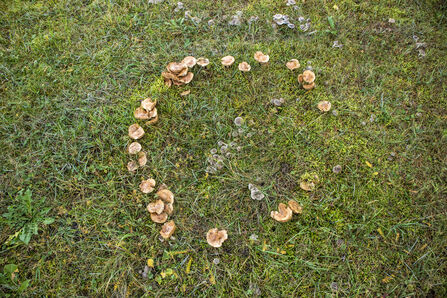It’s October. Autumn is here. Pour yourself a flask of something hot, lace up your boots, and wrap up warm, let’s go and explore! Love the hat, by the way.
Sweet Briar already has its decorations laid out. Droplets of bright red berries cladding hawthorn bushes, wild carrot seed heads bent into their cupped hands grasping for Halloween offerings. The trees have changed to their autumn wardrobe, jackets of yellow and scarves of red.
At this time of year, I’m always on the lookout for fairy rings – most likely to be spotted in woodland and grassy areas.


